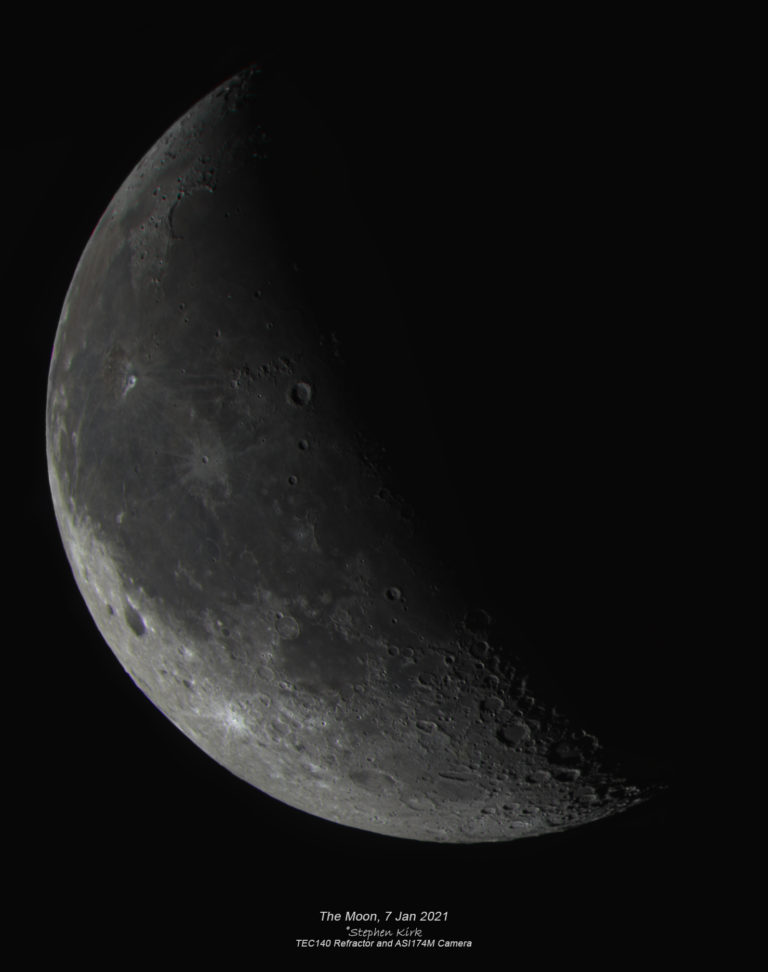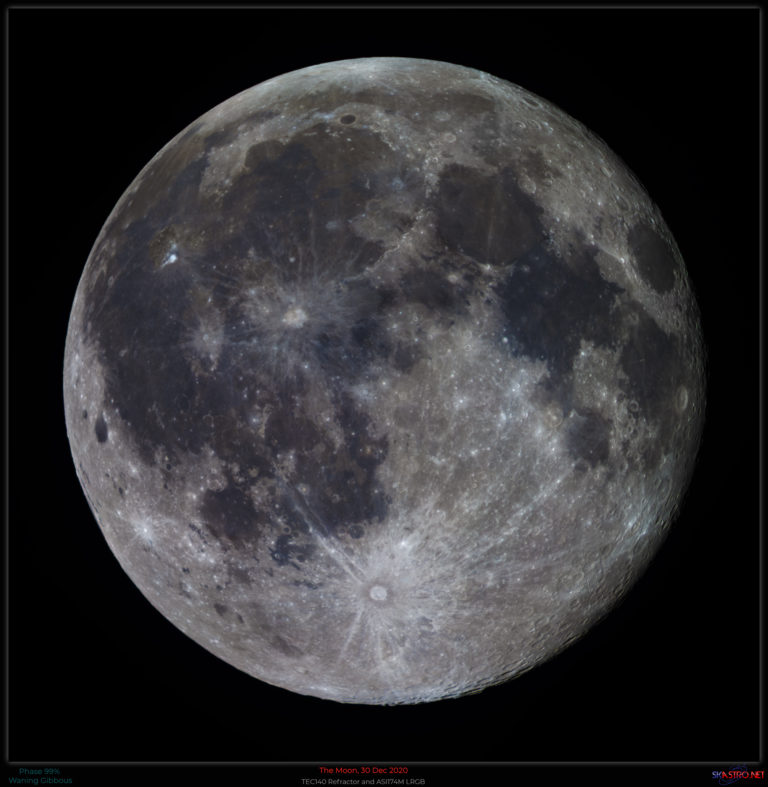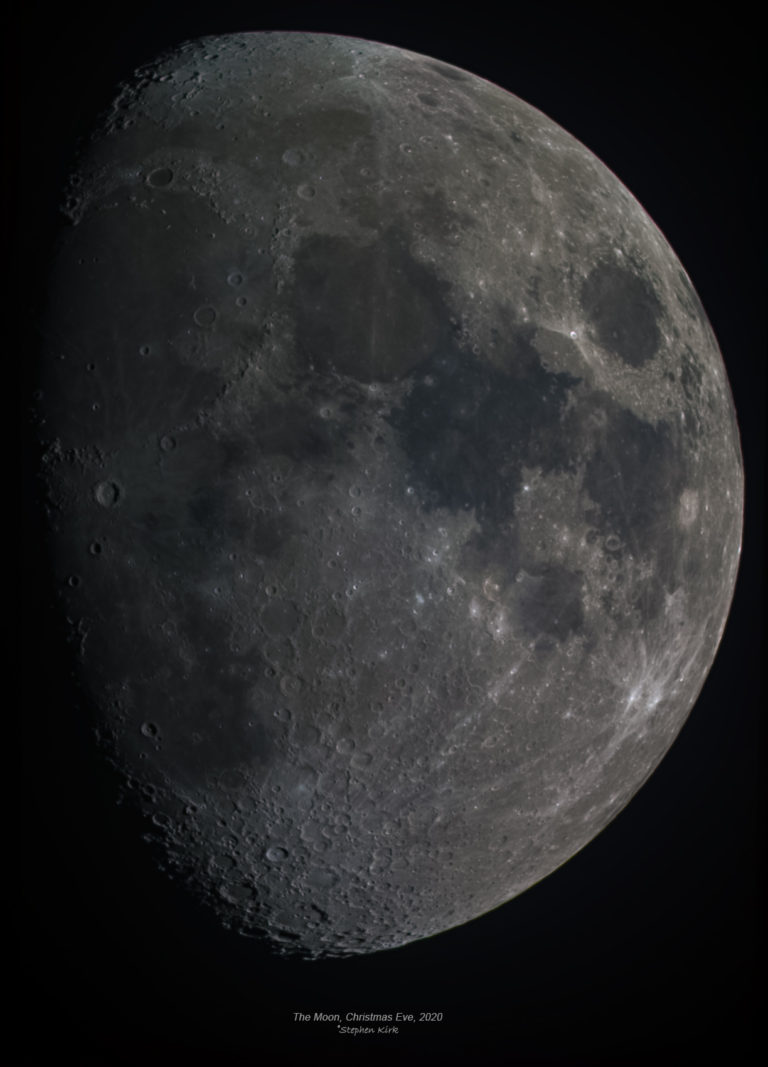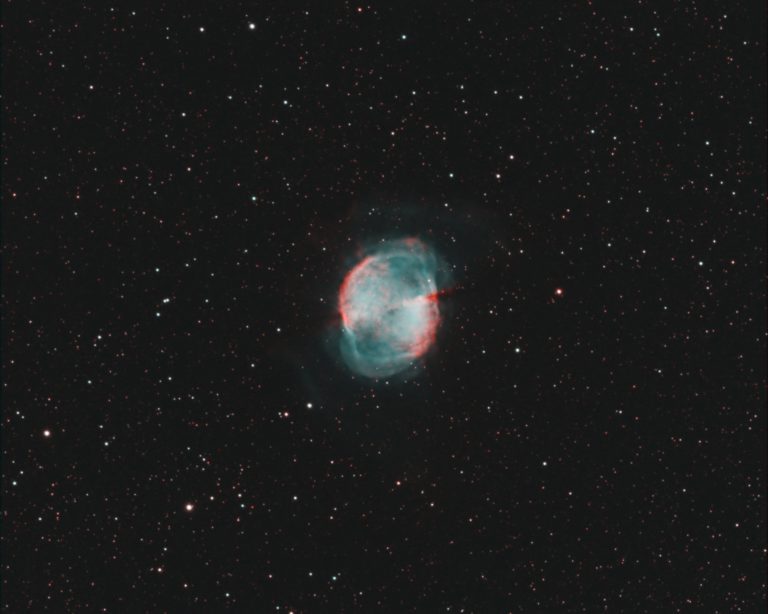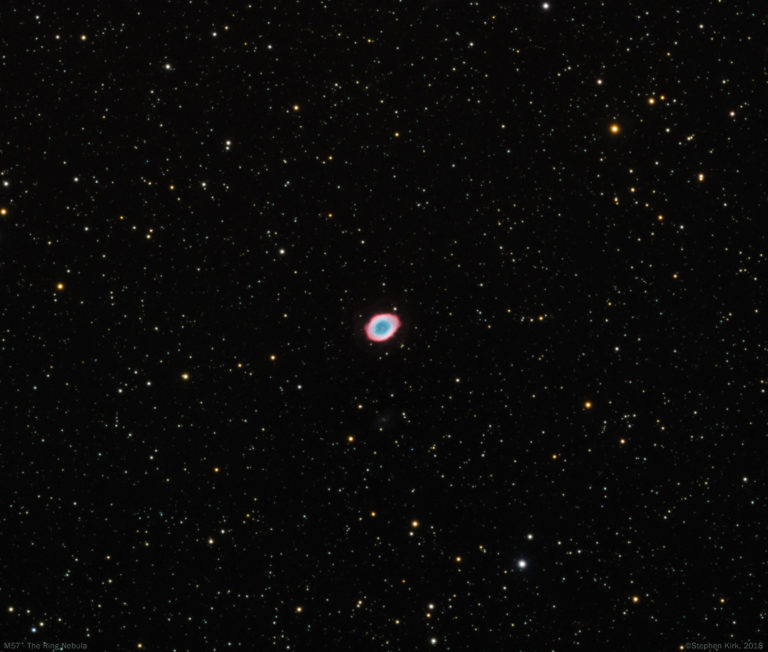I had to get up early in the morning to get this picture of The Moon. I set my alarm and got up at 05:00 which took considerable motivation, especially since it was -6C! I don’t capture many last quarter and later moon pictures because the Moon is only ever visible in that phase early in the morning and working full time it is not easy to be getting up very early when you have to do lots of driving. However, conditions for astronomy in the UK have been exceptionally poor for the last six months of 2020 and I am desperate to be able to image anything at all! The Moon, LRGB TEC140 Refractor Technical Details The Moon was in Scorpio, low down to The South from my location, and seeing was average with the Moon at such a low altitude Phase is 38% waning.Imaged from my back garden…
The Moon at a 99% waning phase 30 Dec 2020 between 21:30 and 22:20. Note the bluish and tan colours of the mare (seas). Moon with LRGB Filters Technical Details Imaged from my back garden in Nottingham, UK. The Moon was high up in the constellation of Cancer and seeing was very good – unusual in the UK. TEC140 refractor and ASI174M camera. The image scale is such that I had to capture two runs with each filter to capture the North and The South parts of The Moon and then stitch the two together in Photoshop using the Merge tool. I used LRGB filters and captured 10000 frames in RGB and 20000 in luminance. Data set was in excess of 500 Gigabytes! I then used Autostakkert, Photoshop and PixInsight to process. Capture software in Sharpcap.
LRGB Image of the Moon, TEC 140, 24 Dec 2020 Technical Details This image of The Moon is a composite picture taken with my TEC140 refractor and an ASI174M high speed mono camera through Baader LRGB and Neodymium filters – the same filters that can be used for Deep Sky imaging (and I have used them for exactly that purpose too).Moon is in a 73% waxing gibbous phase in the constellation of Taurus.I captured 2000 frames through the Baader luminance filter and another 2000 through the neodymium filter. I then registered and combined the master image from each of these with Pixelmath with scaling. I used Multi-Scale linear transformation to sharpen the image and a very slight HDR transformation to bring out the fainter detail. This created the master luminance.Each master R, G and B sub is the best 50% of 5000 frames. I registered the separate RGB channels with…
M27 is a famous planetary nebula in the constellation of Vulpecula, The Fox. Despite its name, it has nothing whatever to do with planets, it is instead the remnants of a dying star that has cast off its outer atmosphere when nuclear reaction can no longer sustain it. Our Sun will look like this in five billion years from afar. M27 is a fine object to view through a telescope. I have also imaged M27 several times over the years. Here for example. The rendition on this page shows M27 in the HOO or Hydrogen-Oxygen-Oxygen palette which maps the Ha channel to Red and green and Blue to OIII (Oxygen 3). Planetary nebula are rich in Oxygen since it is one of the elements synthesised in the nuclear fusion processes as the star dies. M27 – The Dumbbell Nebula in Vulpecula Image Technical Data Imaged from my backyard observatory in…
A famous planetary nebula in the Northern Hemisphere of the sky in the summer constellation of Lyra. One of four planetary nebulae in the Messier catalog of deep sky objects, the other three being M27, M76 and M97. It is visible in a small telescope as a faint ring. M57 is about 2500 light years away and it is the outer envelope shed off by a dying star, the star itself can be seen right in the middle of the nebula. The Sun will look like this from afar when it does the same in about five billion years from now. More massive stars do not die in this fashion but explode in a cataclysmic event called a supernova; M1 being one such example. In the image below, look for the ghostly outer ring surrounding the main “ring” of the nebula. M57 – The Ring Nebula Image Technical Data Imaged…

